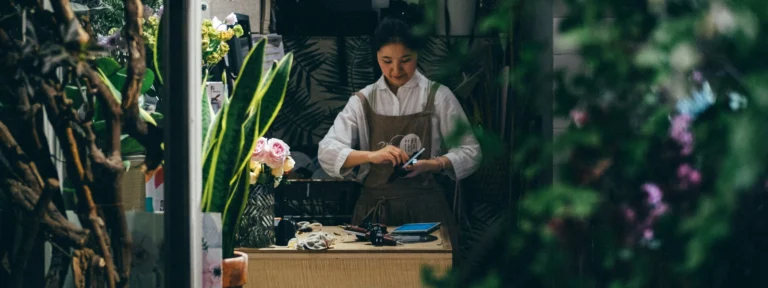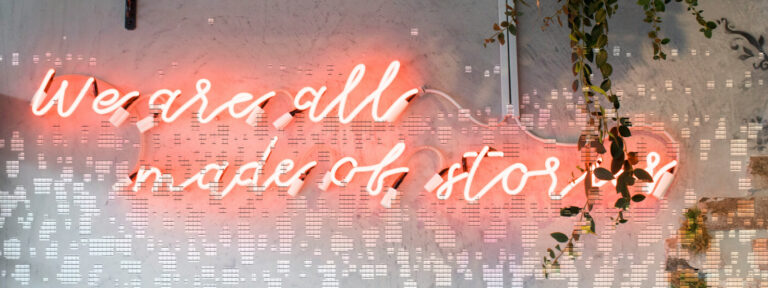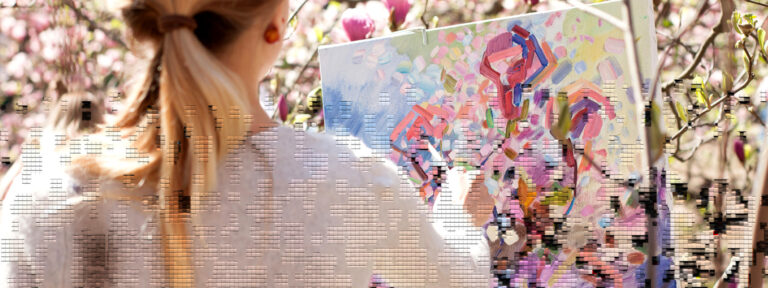Creativity is an intensely personal journey. Whether you paint, draw, sculpt, or express yourself digitally, the act of creation requires vulnerability. Yet, for many of us, that vulnerability invites fear—fear of rejection, failure, or even success. Learning to overcome creative fears as an artist is essential not only for personal growth but also for sharing your work with the world.
Creative fears are more common than you might think. From imposter syndrome to perfectionism, these doubts can hold you back from expressing your true potential and connecting with your audience. But here’s the good news: you don’t have to stay stuck.
We’ll explore practical strategies to help you overcome creative fears as an artist. Whether you’re struggling to embrace imperfection or nervous about putting yourself out there, you’ll find actionable tips and inspiring stories to help you break through those barriers. By the end, you’ll feel empowered to share your work with confidence and build the creative life you’ve always dreamed of.
Table of Contents
- What Are Creative Fears?
- Why Overcoming Creative Fears as an Artist Matters
- Self-Compassion: Embracing Imperfection
- Building Your Online Identity Without Fear
- Gamifying the Creative Process to Overcome Fear
- Using Data-Driven Insights to Build Confidence
- The Importance of Creative Community and Collaboration
- Actionable Steps for Overcoming Creative Fears as an Artist
- Conclusion
What Are Creative Fears?

Creative fears are those anxieties, doubts, and hesitations that creep up when we face the prospect of sharing our art. They can take many forms:
- Fear of Judgment: “What if people hate my work?”
- Imposter Syndrome: “I’m not a real artist. Who am I to share my work?”
- Fear of Failure: “What if I pour myself into this and it doesn’t work out?”
- Perfectionism: “It’s not ready yet—I’ll share it once it’s perfect.”
Every artist has felt some form of these fears at one point. In fact, when I first started sharing my art online, I remember feeling terrified that no one would like it—or worse, that people would criticize my skills or ideas.
But here’s the thing: creative fears are normal. They’re part of the process.
The real trick is learning how to overcome them so you can keep growing.
Why Overcoming Creative Fears as an Artist Matters
You might be wondering, “What’s the harm in keeping my work to myself?” Well, aside from limiting your personal growth, staying hidden keeps you from connecting with others who might love what you create.
Overcoming creative fears as an artist is about more than just hitting ‘post’ on Instagram. It’s about freeing yourself from the chains of doubt and allowing your creative energy to flow unhindered.
When you share your work with the world, you not only give your audience the chance to enjoy it—you also allow yourself the opportunity to receive feedback, grow your skills, and even build a sustainable career out of your art.
Let’s explore some strategies that can help you break through these fears.
Self-Compassion: Embracing Imperfection
One of the biggest barriers to creative empowerment is perfectionism. As artists, we often hold ourselves to impossibly high standards, refusing to share anything until it’s “just right.”
But here’s a hard truth: perfection doesn’t exist. And chasing it will only lead to frustration and burnout.
How Self-Compassion Transforms Your Creative Journey
Self-compassion means accepting that your work is valuable even when it’s not flawless. It means being kind to yourself when things don’t go as planned and understanding that growth is a messy, nonlinear process.
In my early days as a creative, I would redo projects multiple times, never feeling satisfied with the results. Eventually, I realized that I was wasting more time chasing perfection than I was actually learning or improving. Once I embraced the concept of “good enough,” I found that my work got better naturally—because I was no longer paralyzed by self-doubt.
Practical Tips for Practicing Self-Compassion
- Set Small, Achievable Goals: Instead of aiming for a masterpiece, set small milestones that focus on progress rather than perfection.
- Celebrate Your Wins: Even if you just made a brush stroke you’re proud of, celebrate it. Recognize your growth.
- Talk to Yourself Like a Friend: If your best friend were struggling with their art, what would you say to encourage them? Say those same things to yourself.
Building Your Online Identity Without Fear
For many artists, one of the scariest things is putting yourself out there online. Sharing your work on social media or creating a portfolio feels like stepping into the spotlight, making you vulnerable to both praise and criticism. But if you want to thrive in today’s digital landscape, an online presence is essential.
Why You Need an Online Identity as an Artist
In the digital age, having an online presence is crucial for gaining exposure, selling your work, and connecting with your audience. The reality is that without an online identity, your chances of reaching people who resonate with your art are slim. While galleries and exhibitions have their place, the internet is where you can build a global following.
I’ll admit, when I first started sharing my art on Instagram, I was anxious about how it would be received. But as I continued to post, something incredible happened—I started connecting with other creatives who encouraged me, offered constructive feedback, and even commissioned pieces. The online world opened doors I never knew existed.
Overcoming the Fear of Self-Promotion
Self-promotion feels awkward for many artists because it feels self-serving. But promoting your work doesn’t have to be about ego—it’s about sharing your passion and allowing others to enjoy it.
Tips for Building an Authentic Online Presence:
- Start Small: Share snippets of your process or unfinished pieces to ease into the habit of posting.
- Be Authentic: Let your audience see the real you. People resonate with authenticity more than polished perfection.
- Engage with Your Audience: Respond to comments, share stories, and interact with other artists. Building a community can make the online experience less daunting.
For more information on creating a personal brand, check out “The Power of Personal Branding: Building Your Professional Identity.”
Gamifying the Creative Process to Overcome Fear
Sometimes, the pressure to create can feel overwhelming, especially when you’re battling creative fears. One way to make the process less intimidating is by turning it into a game.
How Gamification Can Help You Overcome Creative Fears as an Artist
Gamification means applying elements of game design—such as rewards, challenges, and progress tracking—to non-game activities. When applied to the creative process, this approach can reduce anxiety and make creating more enjoyable.
I tried this technique during a particularly rough patch where I felt stuck creatively. Instead of focusing on creating a masterpiece, I set small, fun challenges for myself—like completing a sketch in under 10 minutes or using only three colors in a digital piece. The sense of accomplishment I felt with each challenge made creating fun again, and it took the pressure off.
Ideas for Gamifying Your Art Practice:
- Timed Challenges: Set a timer for 30 minutes and create something within that time limit.
- Daily or Weekly Challenges: Dedicate a set amount of time each day to create, and track your progress over time.
- Reward System: Set rewards for yourself when you hit creative milestones—whether that’s completing a piece, posting online, or experimenting with a new medium.
Using Data-Driven Insights to Build Confidence
Data might seem out of place in a discussion about overcoming creative fears as an artist, but it can be incredibly empowering. Social media analytics and audience feedback can offer tangible insights into what resonates with people, helping you grow both creatively and professionally.
How Data Can Boost Your Confidence
When I first started tracking which of my posts got the most engagement, I realized something surprising: the pieces I considered “less polished” were often the ones people connected with most. This helped me let go of perfectionism and realize that my audience valued authenticity over technical precision.
Ways to Use Data for Creative Growth:
- Track Engagement: Use social media analytics to see which posts get the most likes, comments, or shares. This can guide you in creating content your audience enjoys.
- Monitor Growth: Keep an eye on your follower count, website traffic, or portfolio visits. These metrics show that your work is reaching people.
- Listen to Feedback: Pay attention to comments and messages from your audience. Constructive feedback can be incredibly valuable for improvement.
The Importance of Creative Community and Collaboration
Art can be isolating at times, especially when you’re battling your own fears. That’s why finding a supportive community or engaging in collaborations with other artists can be incredibly empowering.
Why Community is Key to Overcoming Creative Fears as an Artist
When you’re surrounded by fellow creatives, you realize that you’re not alone in your struggles. Collaborating or simply engaging with others who share your passions can provide fresh perspectives, encouragement, and a sense of belonging.
How to Find and Engage with a Creative Community:
- Join Online Groups: Facebook groups, Reddit communities, or Instagram hashtags dedicated to your medium can connect you with like-minded artists.
- Collaborate: Partner with other artists on joint projects. Not only does this expand your network, but it also pushes you to try new things.
- Attend Events: Whether virtual or in-person, art events, workshops, and exhibitions are great places to meet other creatives and build your confidence.
Actionable Steps for Overcoming Creative Fears as an Artist
Now that we’ve covered strategies to help you embrace your creative empowerment, let’s summarize it into actionable steps you can implement today:
- Practice Self-Compassion: Accept that your work doesn’t have to be perfect to be valuable.
- Start Building Your Online Presence: Create an Instagram account or portfolio website and start sharing small pieces of your work.
- Gamify the Process: Set fun, creative challenges for yourself to reduce the pressure of creating.
- Leverage Data: Use social media analytics to understand what resonates with your audience.
- Find Your Tribe: Join creative communities or collaborate with other artists to find support and inspiration.
Final Thoughts
Overcoming creative fears as an artist is a journey, not a destination. We’ve discussed how fears like judgment, failure, and perfectionism can block your creativity but by practicing self-compassion, building an authentic online identity, gamifying your process, and leveraging data-driven insights, you can push past these barriers.
Additionally, finding a supportive community and embracing collaboration can ease the weight of isolation and self-doubt. Remember, every artist has faced these struggles—what defines your success is your ability to face them head-on and keep growing.
The world is waiting for what only you can create, so don’t hold yourself back.



